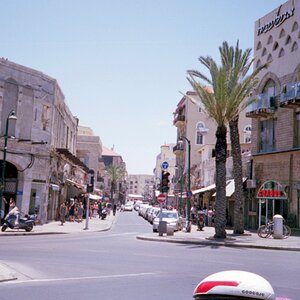Navigation
Install the app
How to install the app on iOS
Follow along with the video below to see how to install our site as a web app on your home screen.

Note: This feature currently requires accessing the site using the built-in Safari browser.
More options
You are using an out of date browser. It may not display this or other websites correctly.
You should upgrade or use an alternative browser.
You should upgrade or use an alternative browser.
Thinking of a 400mm for Moon Photography?
- Thread starter BC_Photos
- Start date
beagle100
Been spending a lot of time on here!
- Joined
- Mar 31, 2015
- Messages
- 2,073
- Reaction score
- 546
- Can others edit my Photos
- Photos OK to edit
Well the most important question is what your budget is.
right - the OP's poll selections indicate $500 - $1,000
TCampbell
Been spending a lot of time on here!
- Joined
- Mar 31, 2012
- Messages
- 3,614
- Reaction score
- 1,556
- Location
- Dearborn, MI
- Can others edit my Photos
- Photos OK to edit
The moon has an angular diameter of only 1/2º from edge to edge. A 400mm lens isn't very much for that -- offering an angular dimension of 2.1º x 4.2º if used with an APS-C crop-frame camera body.
I use an apochromatic telescope (in my case it's a TeleVue NP101is -- it has a 540mm focal length at f/5.4. -- it's a 101mm aperture.) But I use a TeleVue 2x PowerMate (basically a high end tele-extender). That takes it up to the equivalent of a 1080mm at f/11 -- which works well for the moon.
I'm not home so I can't upload a photo from the TV NP101, but here's a very similar image taken with a Meade 80mm apochromatic 3 element scope (this scope is 480mm f/6 and with the 2x PowerMate it's 960mm f/12).
This image was cropped slightly (but not much).
Gibbous Moon Flickr - Photo Sharing
Apochromatic refracters are considerably more expensive than achromatic (traditional) refractors, but there's a HUGE upgrade in image quality. Achromatic scopes only have 2 elements and suffer from chromatic abberation (dispersion) which is rather noticeable near the edges of the frame.
To be fair, it's not just a scope... you'd also need a mount (these scopes do not include a mount), and a 2x Powermate, a camera adapter for the powermate, and a T-ring.
EDIT: I missed the "I'm not looking to fill the frame" comment. In which case... something around 500-600mm might work for you.
I use an apochromatic telescope (in my case it's a TeleVue NP101is -- it has a 540mm focal length at f/5.4. -- it's a 101mm aperture.) But I use a TeleVue 2x PowerMate (basically a high end tele-extender). That takes it up to the equivalent of a 1080mm at f/11 -- which works well for the moon.
I'm not home so I can't upload a photo from the TV NP101, but here's a very similar image taken with a Meade 80mm apochromatic 3 element scope (this scope is 480mm f/6 and with the 2x PowerMate it's 960mm f/12).
This image was cropped slightly (but not much).
Gibbous Moon Flickr - Photo Sharing
Apochromatic refracters are considerably more expensive than achromatic (traditional) refractors, but there's a HUGE upgrade in image quality. Achromatic scopes only have 2 elements and suffer from chromatic abberation (dispersion) which is rather noticeable near the edges of the frame.
To be fair, it's not just a scope... you'd also need a mount (these scopes do not include a mount), and a 2x Powermate, a camera adapter for the powermate, and a T-ring.
EDIT: I missed the "I'm not looking to fill the frame" comment. In which case... something around 500-600mm might work for you.
Last edited:
Dao
No longer a newbie, moving up!
The moon has an angular diameter of only 1/2º from edge to edge. A 400mm lens isn't very much for that -- offering an angular dimension of 2.1º x 4.2º if used with an APS-C crop-frame camera body.
I use an apochromatic telescope (in my case it's a TeleVue NP101is -- it has a 540mm focal length at f/5.4. -- it's a 101mm aperture.) But I use a TeleVue 2x PowerMate (basically a high end tele-extender). That takes it up to the equivalent of a 1080mm at f/11 -- which works well for the moon.
I'm not home so I can't upload a photo from the TV NP101, but here's a very similar image taken with a Meade 80mm apochromatic 3 element scope (this scope is 480mm f/6 and with the 2x PowerMate it's 960mm f/12).
This image was cropped slightly (but not much).
Gibbous Moon Flickr - Photo Sharing
Apochromatic refracters are considerably more expensive than achromatic (traditional) refractors, but there's a HUGE upgrade in image quality. Achromatic scopes only have 2 elements and suffer from chromatic abberation (dispersion) which is rather noticeable near the edges of the frame.
To be fair, it's not just a scope... you'd also need a mount (these scopes do not include a mount), and a 2x Powermate, a camera adapter for the powermate, and a T-ring.
EDIT: I missed the "I'm not looking to fill the frame" comment. In which case... something around 500-600mm might work for you.
Tim,
I had a question, will a 8 to 12 inch dobsonian telescope (lower cost for me) with correct eye piece and camera mount works too? Last year, I read about taking photos of the moon and planet and did not found and good answer.
TCampbell
Been spending a lot of time on here!
- Joined
- Mar 31, 2012
- Messages
- 3,614
- Reaction score
- 1,556
- Location
- Dearborn, MI
- Can others edit my Photos
- Photos OK to edit
Tim,
I had a question, will a 8 to 12 inch dobsonian telescope (lower cost for me) with correct eye piece and camera mount works too? Last year, I read about taking photos of the moon and planet and did not found and good answer.
The answer is... "maybe". Here's why:
The telescope itself likely has a focal length of somewhere around 1200mm. That part is no problem. It will provide an angular field of view in the narrow direction of about .7º and you need something with an angular field of view of at least .5º (slightly more is better to give yourself some breathing room around the moon... which will be moving. Dobs usually have focal ratios somewhere around f/5-ish That's giving you a good 2 stops faster than a Schmidt Cassegrain so you're gaining a lot of light and at ISO 100 you can probably use a 1/400th sec. exposure (the fact that the moon is moving and the scope isn't motorized to track the moon is no problem.)
Here's the problem part...
On ANY scope that uses a 90º diagonal to insert the eyepiece (basically all refractors and most all catadioptric (sometimes called "compound") scopes such as Schmidt Cassegrain scopes and Maksutov Cassegrain scopes) the 90º diagonal adds about 2" to the light path. The scope is designed with the assumption that there will be a diagonal in the light path. The focal length is measured from the first optical element all the way to the last optical element and it's counting on the length of that 90º diagonal being in the path.
When you use a DSLR camera, a Canon DSLR has a 44mm "flange-to-focal-plane" distance (from the lens mount to the sensor). I think Nikon is 46.5mm. Add to this the thickness of the T-ring to the fully-seated position of a camera nosepiece. That'll probably add another 10-12mm (this varies depending on the nosepiece.) This means from the point where the camera is full seated in the telescope's eyepiece seat (where you'll insert the camera) you still have another 55-60mm or so before you reach the sensor (focal plane.)
For a scope that uses a 90º diagonal at the back, you remove the diagonal (which takes about 2" out of the focal length of the scope) and then attach the camera (which has about 2" of focal length to reach the sensor) and the total focal length is pretty much unchanged... just tweak the focus to get a sharp image and you're ready.
For a scope like a Dob... there is no 90º diagonal to remove. The Dob has a secondary mirror inside the tube that acts like a diagonal so that you can attach the eyepiece at the front of the optical tube... on the side. There is no removable diagonal. The scope is designed to bring an image to focus assuming an eyepiece is in the scope and you have the travel of the focusing tube... but it's not much travel. When you attach a camera, the focal plane is now about 2" farther away then the scope was designed to accommodate and now you need to run the focus all the way IN and as you do so, you'll notice the image is starting to focus... but usually you hit the hard limit on the focuser before the image is focused.
This problem exists because (a) a DSLR adds about 2" to the focal length and (b) there's no easy way to take that 2" back out of the focal length of the scope (no diagonal to remove.)
There are three work-arounds....
(1) If you use a camera that puts the focal plane very close to the lens mounting flange (such as a mirrorless camera) then you might get the focal plane close enough to the correct focal length of the scope. In other words ... use a different camera (one that doesn't add 2" to the focal length).
(2) Some Dob owners have shimmed the primary mirror forward in the optical tube. If you moved the mirror an inch closer to the secondary mirror, then you'd actually subtract a full 2" from the focal length inside the tube and that would meant that a DSLR camera can come to focus (in reality you probably don't need to move it a full inch. You may find that just a 1/2" is enough. You'll find that the focuser drawtube needs to be out farther when using regular eyepieces, but at least the camera will work. Also... extensions are easy to find (simple hollow tube to add a bit of length to the light path.)
(3) If you use a focal length multiplier (e.g. a "barlow") then it gets around the the problem because the image will come to focus for the barlow and refocuses the multiplied image back farther. The downside to the multiplier (barlow) is that it also changes the focal ratio and effect focal length of your scope. E.g. with a 2x barlow on a 1200mm scope it's now as if you have a 2400mm focal length and now the angle of view in on your camera is too small to fit the whole moon in view for a single image.
I should mention that not all dobs have this problem... some have a generous amount of travel on the optical tube and the scope will come to focus with a DSLR.
A Sony E-mount camera body has an 18mm flange-to-focal-plane distance. Add the length of the T-ring and it's probably a total of about 30mm or less (about an 1") because the camera has no reflex mirror. (BTW, this wouldn't work for a Sony A-mount camera because there is a reflex mirror... it's just not a moving reflex mirror.) I would probably rent a camera before purchasing one ... just to make the camera really will focus with your Dob.
TCampbell
Been spending a lot of time on here!
- Joined
- Mar 31, 2012
- Messages
- 3,614
- Reaction score
- 1,556
- Location
- Dearborn, MI
- Can others edit my Photos
- Photos OK to edit
BTW, here's the image from the TeleVue NP101is (not the Meade). This image is cropped... but only very slightly. The moon does occupy most of the frame even in the uncropped version.
To determine how large the moon will be in an image from a lens of any given focal length, use the Angular Field of View Calculator on this page: http://www.tawbaware.com/maxlyons/calc.htm and remember that the angular width of the moon is about .5º (it varies by a tiny amount because the moon's orbit isn't perfectly circular... it's a tiny bit larger at at perigee and a tiny bit smaller at apogee -- but not by much.

To determine how large the moon will be in an image from a lens of any given focal length, use the Angular Field of View Calculator on this page: http://www.tawbaware.com/maxlyons/calc.htm and remember that the angular width of the moon is about .5º (it varies by a tiny amount because the moon's orbit isn't perfectly circular... it's a tiny bit larger at at perigee and a tiny bit smaller at apogee -- but not by much.
petrochemist
TPF junkie!
- Joined
- Mar 9, 2014
- Messages
- 1,873
- Reaction score
- 608
- Can others edit my Photos
- Photos OK to edit
Tim thats a great explaination of the difficulties of using a SLR on a reflector.
One minor correction, the focusing problems relate to Newtonian telescopes.
Dobsonian is the term specific for Newtonian scopes that are mounted on a basic alt-azimuth mount. The issue is just the same for equitorial mounted Newtonians (such as mine which can't reach prime focus with a DSLR, but can with Micro 4/3).
Another couple of other solutions similar to negative projection (your #3) are to use eyepiece projection either with both the eyepiece & a camera lens (called Afocal projection) or without the camera lens just the eyepiece (called positive projection). All the projection techniques change the focal ratio & magnification of the scope which depending on the subject can be good or bad.
Prime focus (no eyepiece or lens) in my experience gives much more contrasty images, but this may just be down to my eyepieces/technique.
One minor correction, the focusing problems relate to Newtonian telescopes.
Dobsonian is the term specific for Newtonian scopes that are mounted on a basic alt-azimuth mount. The issue is just the same for equitorial mounted Newtonians (such as mine which can't reach prime focus with a DSLR, but can with Micro 4/3).
Another couple of other solutions similar to negative projection (your #3) are to use eyepiece projection either with both the eyepiece & a camera lens (called Afocal projection) or without the camera lens just the eyepiece (called positive projection). All the projection techniques change the focal ratio & magnification of the scope which depending on the subject can be good or bad.
Prime focus (no eyepiece or lens) in my experience gives much more contrasty images, but this may just be down to my eyepieces/technique.
Dao
No longer a newbie, moving up!
Thanks Tim. It make perfect sense. In other words, it is like mounting a FD lens on the EF mount. The focus plane is in front of the recording medium. In this case here, it is even worst.
Sorry for hijacking this thread.
Sorry for hijacking this thread.
TCampbell
Been spending a lot of time on here!
- Joined
- Mar 31, 2012
- Messages
- 3,614
- Reaction score
- 1,556
- Location
- Dearborn, MI
- Can others edit my Photos
- Photos OK to edit
Tim thats a great explaination of the difficulties of using a SLR on a reflector.
One minor correction, the focusing problems relate to Newtonian telescopes.
Dobsonian is the term specific for Newtonian scopes that are mounted on a basic alt-azimuth mount. The issue is just the same for equitorial mounted Newtonians (such as mine which can't reach prime focus with a DSLR, but can with Micro 4/3).
Another couple of other solutions similar to negative projection (your #3) are to use eyepiece projection either with both the eyepiece & a camera lens (called Afocal projection) or without the camera lens just the eyepiece (called positive projection). All the projection techniques change the focal ratio & magnification of the scope which depending on the subject can be good or bad.
Prime focus (no eyepiece or lens) in my experience gives much more contrasty images, but this may just be down to my eyepieces/technique.
Yes. Thanks for bringing that up.
"Dobsonian" is actually the name of the mount design. But the only type of optical tube ever used on a Dobsonian mount is a Newtonian reflector. Everyone just refers to the thing as a "Dob" for short... but what they really mean is a "Newtonian reflector on a Dobsonian mount". You can get a Newtonian on other types of mounts as well -- such as a equatorial mount. The limited focus travel issue is all about the optical tube design and not about the mount. So any Newtonian scope can (and often will) have this limitation.
As for projection... the tough part is holding the camera in exactly the right position to get a good image. There are mounting brackets that clamp to the eyepiece and hold the camera for you and it helps if it's a very light camera (smart phones are very popular.) I have a club member who does this all the time. The images are not nearly as good as prime focus (camera attached directly to telescope with no lens or eyepiece because the telescope is the lens.)
One day (I swear he did this to mess with us) he mounted his Canon EOS for prime focus to image Saturn... and with the image of Saturn showing up on the live-view screen on the back of the camera, he pulled out his iPhone and took a photo of it. (he had the serious imagers in the club going crazy over that one... he already had a very nice camera in the telescope, focused it, and all he needed to do was start imaging using the DSLR and instead he grabs the iPhone. He "says" he just wanted a picture to show people what the camera setup looked like... thought the iPhone version of the image is the only one he shared. We never saw any image taken by the DSLR.)
Sometimes projection works well though...
I took this with my iPhone in 2013 (so this would have been with an iPhone 4) through my TeleVue NP101 via afocal projection. This is the Sun's photosphere using something called a "Herschel Wedge" (in my case it's a Lunt solar wedge) to filter the light to a safe level.
beagle100
Been spending a lot of time on here!
- Joined
- Mar 31, 2015
- Messages
- 2,073
- Reaction score
- 546
- Can others edit my Photos
- Photos OK to edit
Tim thats a great explaination of the difficulties of using a SLR on a reflector.
I took this with my iPhone in 2013 (so this would have been with an iPhone 4) through my TeleVue NP101 via afocal projection. This is the Sun's photosphere using something called a "Herschel Wedge" (in my case it's a Lunt solar wedge) to filter the light to a safe level.
View attachment 105416
OK, that's a nice sun pic but not sure how this applies to the moon pic question since the OP apparently does not have a "TeleVue NP101"[/QUOTE]
TCampbell
Been spending a lot of time on here!
- Joined
- Mar 31, 2012
- Messages
- 3,614
- Reaction score
- 1,556
- Location
- Dearborn, MI
- Can others edit my Photos
- Photos OK to edit
[/QUOTE]Tim thats a great explaination of the difficulties of using a SLR on a reflector.
I took this with my iPhone in 2013 (so this would have been with an iPhone 4) through my TeleVue NP101 via afocal projection. This is the Sun's photosphere using something called a "Herschel Wedge" (in my case it's a Lunt solar wedge) to filter the light to a safe level.
View attachment 105416
OK, that's a nice sun pic but not sure how this applies to the moon pic question since the OP apparently does not have a "TeleVue NP101"
The topic of taking an image via "prime focus" vs. "afocal projection" came up. Afocal projection is somewhat difficult to do and get good results because the camera's position relative to the eyepiece is critical and difficult to hold in the magic spot. So most afocal images don't look so good. This is the only afocal image I've ever managed that actually looked good -- it happens to be the sun.
It really doesn't matter that it's the Sun. The Sun and the Moon have an angular dimension of about 1/2º, so they'll occupy the very same size in an image.
The diameter of the Sun is about 400x larger than the diameter of the Moon. And by sheer coincidence... the Sun is also about 400x farther away than the moon. Because of this relationship, the Moon and Sun both have an angular dimension of about 1/2º.
The particular scope is mentioned BECAUSE the OP was asking what sort of equipment they should consider for taking a better image of the Moon.
Similar threads
- Replies
- 3
- Views
- 372
- Replies
- 9
- Views
- 356
- Replies
- 3
- Views
- 922
- Replies
- 26
- Views
- 3K
- Replies
- 0
- Views
- 535

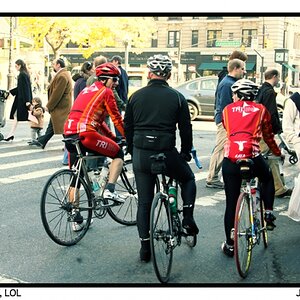
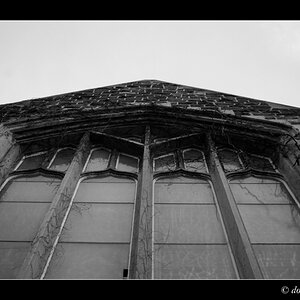
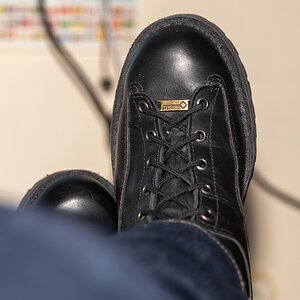

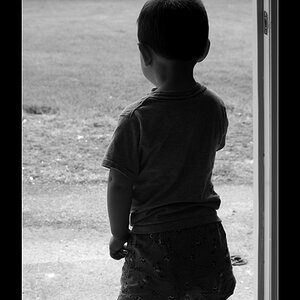
![[No title]](/data/xfmg/thumbnail/34/34075-a2fb0d7352396e58920e196958f6d006.jpg?1619736267)
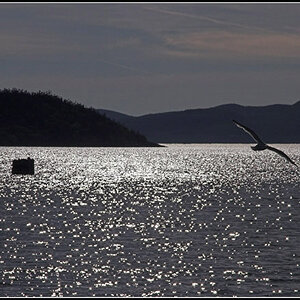
![[No title]](/data/xfmg/thumbnail/35/35965-cac1057a7f2dd8e8aeeefed50ae8c080.jpg?1619737282)
![[No title]](/data/xfmg/thumbnail/34/34077-2933006a1d00efe7d5967044e94e345e.jpg?1619736268)

